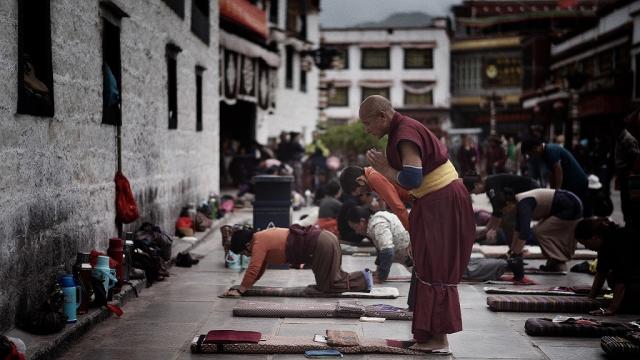Academics have called for Beijing to use the Chinese name for Tibet – Xizang – when referring to the autonomous region in English to help “reconstruct” its image.
The call came during an official seminar on Tibet that was held in Beijing from Monday to Wednesday, according to a report on Tongzhan Xinyu, a WeChat account run by the United Front Work Department, which oversees ethnic and minority affairs.
“To establish China’s dominant position in the international discourse related to Tibet, there is an urgent need for an English translation of ‘Tibet’ that can accurately describe China’s position,” Wang Linping, a professor at Harbin Engineering University’s College of Marxism, was quoted as saying.
He claimed the use of the name Tibet had “seriously misled the international community” over the “geographical scope” of the region.
Wang said the region should instead be referred to as Xizang – the pinyin, or Chinese romanisation of Mandarin script for Tibet.
According to the report, when “Tibet” is used outside China, it “includes not only Tibet but also covers areas in Qinghai, Sichuan, Gansu and Yunnan provinces”.
“This overlaps greatly with the so-called Greater Tibet long advocated by the 14th Dalai Lama,” the report said.
It comes amid Beijing’s push to foster a “sense of community for the Chinese nation” – an effort to boost national identity among ethnic minority regions – that was first put forward by President Xi Jinping at the Communist Party congress in 2017.
One way to achieve that is through what Beijing refers to as the promotion of “standard spoken and written Chinese language” – meaning Mandarin.
Lian Xiangmin, vice-director of the China Tibetology Research Centre in Beijing, told the seminar that using Xizang would be in line with a proposal approved by the United Nations in 1977 and State Council guidelines from 1978 to use pinyin for Chinese place names in English.
Xia Yan, an editor with the China Tibet Information Centre, a news agency under the United Front Work Department, said changing the English name to Xizang could “help reconstruct Tibet’s media image and enhance China’s international discourse on Tibet”.
The seminar was attended by more than 320 scholars, including over 40 from outside mainland China, the official China News Service reported.
Tibet was annexed by the People’s Liberation Army in 1950, a year after the Communist Party won the Chinese civil war. The Dalai Lama fled to India in 1959 and remains the exiled spiritual leader of Tibet. Beijing blamed him for unrest in Tibet in the late 1980s and in 2008, and has called the Nobel Peace Prize laureate a “separatist” seeking independence for Tibet, a claim the Dalai Lama denies.
The Tibet autonomous region is home to 3.5 million people.
Across China, most places are referred to in English by the pinyin of Chinese characters, but the minority language pronunciation or internationally known names are also used in some ethnic minority regions.
These include the use of Inner Mongolia autonomous region instead of the pinyin, Nei Menggu, and Urumqi and Kashgar, instead of Wulumuqi and Kashi in pinyin, for the cities in the Xinjiang Uygur autonomous region.
Xizang has appeared instead of Tibet in the English-language editions of party mouthpiece People’s Daily and nationalist tabloid Global Times since 2019. The official Xinhua news agency and state broadcaster CGTN have also begun using Xizang in their English-language reports.
But no state media outlet has completely replaced Tibet with Xizang, and both names continue to be used in foreign ministry statements.
scmp.com

